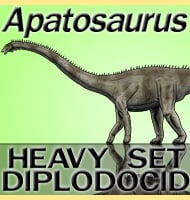Amphicoelias
In Depth For one hundred and forty years Amphicoelias was regarded by some to have been one of the largest dinosaurs to ever walk the earth. First named in 1878 by Edward Drinker Cope, and based upon some truly large fossils of vertebrae and partial limbs and pubis bones. Three species were named, A. altus, … Read more
